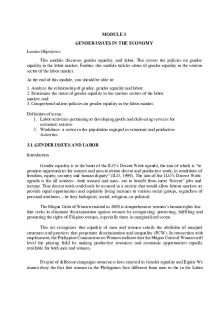Brick Work - Lecture notes 3 PDF

| Title | Brick Work - Lecture notes 3 |
|---|---|
| Course | Building Technology II |
| Institution | New York City College of Technology |
| Pages | 3 |
| File Size | 169.4 KB |
| File Type | |
| Total Downloads | 42 |
| Total Views | 148 |
Summary
the process of laying bricks and other brick information...
Description
Brickwork Bricks are a form of masonry used to build walls. The process of laying bricks into r0ows is time consuming and complicated. It begins with the orientation of the brick, such as stretcher, header, soldier, rowlock, and shiner. The way the bricks are laid helps the overall strength of the wall. Most bricks are placed horizontally, because vertically placed bricks are not as sustainable. Bricks are combined using mortar and wall ties. The different bonding types of bricks; Dearne’s, English, Double Basket Weave, Single Basket Weave, Herringbone, and others, are used for both strength and aesthetic.
A stretcher brick is a brick laid flat with its longest side exposed. A header brick is one that it laid flat with its shortest side exposed. Soldier and Sailor bricks are both laid vertically, with the narrow side showing for soldier and the wider side showing for sailor. A shiner and Rowlock are laid horizontally on their narrowest side; the widest face is shown for shiner, and the smaller face is shown for Rowlock. Perpends are the edges of the brick. When they are bonded, bricks perpends do not align when they are less than one row apart. This is because it would weaken the wall as a whole. One way bricks are commonly tied together is by having the bricks of one wall be headers, therefore
making the thickness of the wall twice that of a wall that was built using only stretchers. There are many types of load bearing bonds. The three main types are the Flemish Bond, Monk Bond, and Sussex bond.
Flemish
Monk
Sussex Flemish Bonds have a stretcher between two headers. The variation in color is due to the different baking process for each brick. The headers are often exposed to fire because of this. If the pattern on the front of the wall is the same as the pattern on the rear, then the wall is called a Double Flemish bond. If it is not, then it is called a Single Flemish Bond. The Monk Bond is created by having two stretchers between a header. If the bricks are staggered it can create an aesthetically pleasing pyramid pattern. If the pattern does happen to be subtly stagger it is renamed as the Raking Monk Bond. This is often found in Northern Europe. The Sussex bond has three stretchers between every header. Each header is centered above the midpoint of a perpend. It is one of the least expensive bonds to make because of the lack of headers and ease of construction, although it is not good for a surface that has many features added onto it. These are used often for long walls, such as those that might enclose a garden....
Similar Free PDFs

Brick Work - Lecture notes 3
- 3 Pages

Lecture 3 - rational work design
- 4 Pages

Lecture notes, lecture 3
- 5 Pages

Lecture notes, lecture 3
- 8 Pages

Notes#3 - Lecture 3 notes
- 49 Pages

Lecture notes, lecture 3
- 59 Pages

3 - Lecture notes 3
- 7 Pages

Lecture Notes, Lecture Exam 3
- 15 Pages

LECTURE 3 Management lecture notes
- 35 Pages

CIV1000 - 3 - Lecture notes 3
- 4 Pages

Chapter 3 - Lecture notes 3
- 6 Pages

Chapter 3 - Lecture notes 3
- 6 Pages
Popular Institutions
- Tinajero National High School - Annex
- Politeknik Caltex Riau
- Yokohama City University
- SGT University
- University of Al-Qadisiyah
- Divine Word College of Vigan
- Techniek College Rotterdam
- Universidade de Santiago
- Universiti Teknologi MARA Cawangan Johor Kampus Pasir Gudang
- Poltekkes Kemenkes Yogyakarta
- Baguio City National High School
- Colegio san marcos
- preparatoria uno
- Centro de Bachillerato Tecnológico Industrial y de Servicios No. 107
- Dalian Maritime University
- Quang Trung Secondary School
- Colegio Tecnológico en Informática
- Corporación Regional de Educación Superior
- Grupo CEDVA
- Dar Al Uloom University
- Centro de Estudios Preuniversitarios de la Universidad Nacional de Ingeniería
- 上智大学
- Aakash International School, Nuna Majara
- San Felipe Neri Catholic School
- Kang Chiao International School - New Taipei City
- Misamis Occidental National High School
- Institución Educativa Escuela Normal Juan Ladrilleros
- Kolehiyo ng Pantukan
- Batanes State College
- Instituto Continental
- Sekolah Menengah Kejuruan Kesehatan Kaltara (Tarakan)
- Colegio de La Inmaculada Concepcion - Cebu



